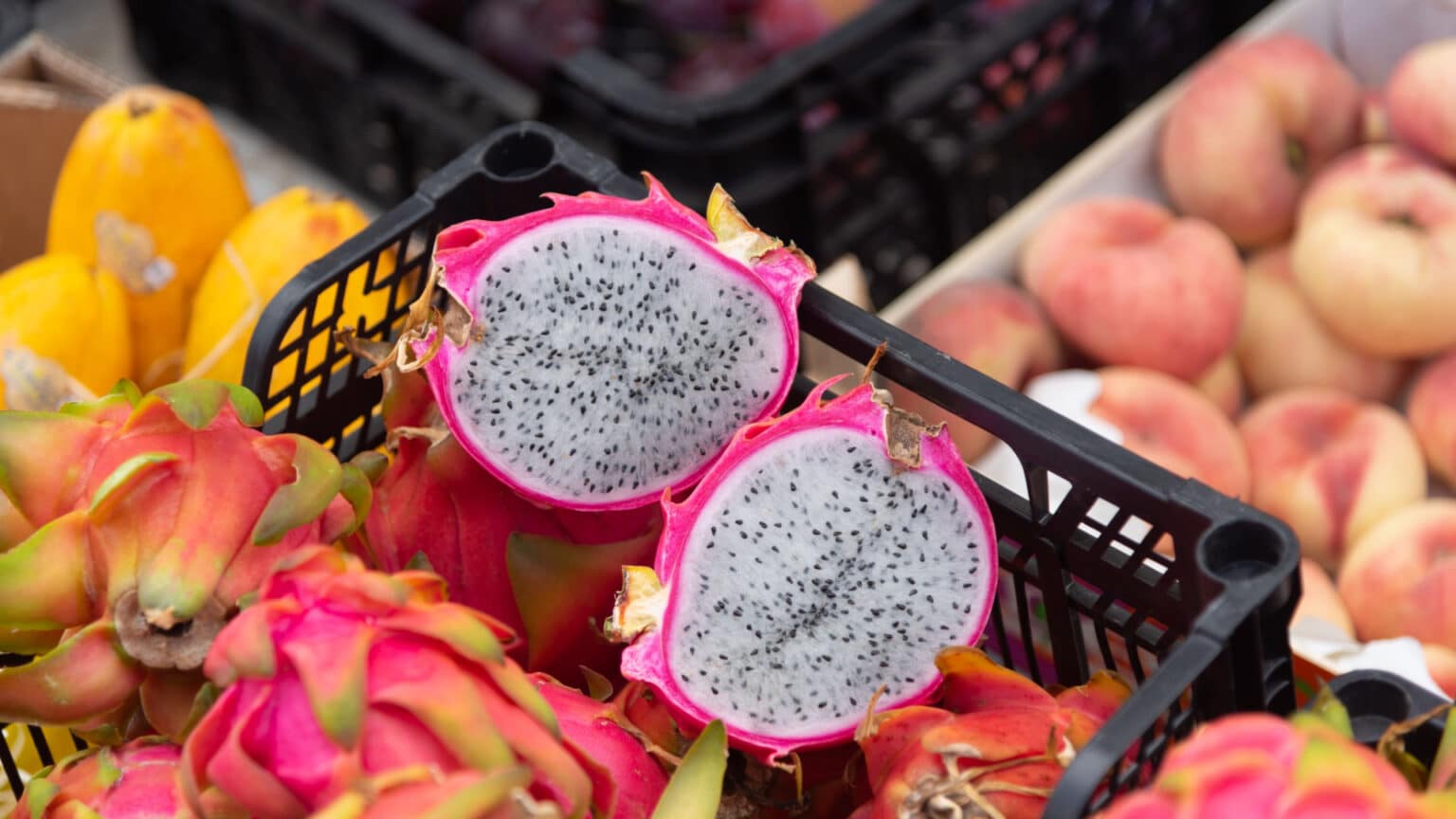Travel and food are inextricably linked. We all have fond memories of where we were when we had our first Paella or our first bite of Chorizo. We try to recreate that ambience and recall those memories by cooking “travel” dishes at home or eating out.
Lanzarote is a fusion of ingredients and cuisines. Influences from nearby Africa, potatoes and chillies from South America and Spain’s vibrant cuisine and cooking style have joined together in Lanzarote.
So, suppose you are considering visiting Lanzarote and want to understand the food scene better. What are the Best Traditional Lanzarote Foods to try?
Papas Arrugadas
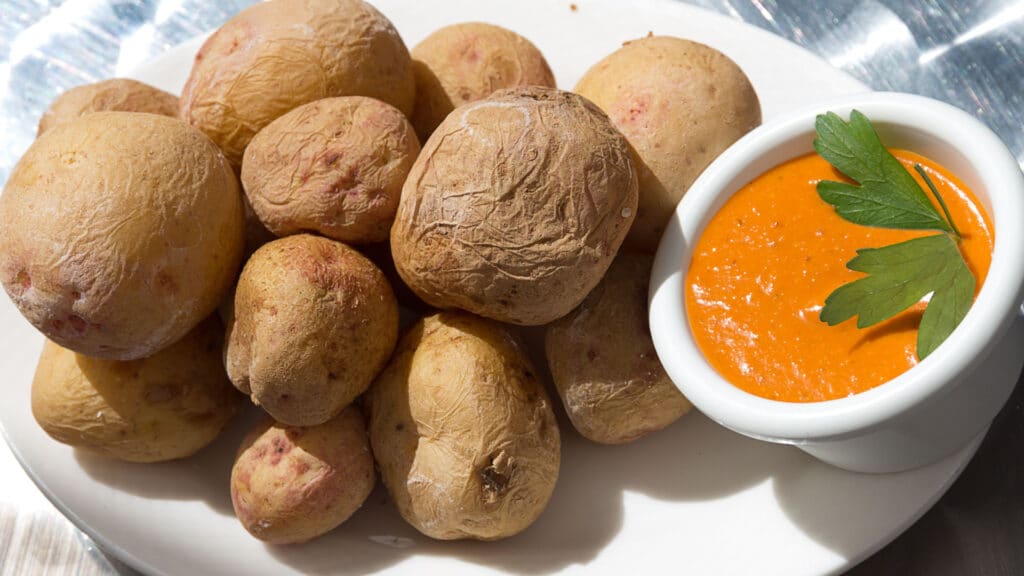
Wrinkled potatoes. These are the signature dish of Lanzarote and are available everywhere. There are very few direct references when they arose, but they were first mentioned in a newspaper from Gran Canaria in 1853.
These small unpeeled potatoes with wrinkly, sometimes black skin appear on every menu. Traditionally they were washed in seawater to remove the dirt and then boiled in fresh seawater to save precious drinking water. Nowadays, they will be cooked in salted tap water.
With the water drained off, they are left in the pan to dry and wrinkle, which leaves the skin with a salty crust. They are always served with a mojo sauce to dip them into.
What is not to like, salted, boiled Canarian potatoes with a dipping sauce?
Mojo
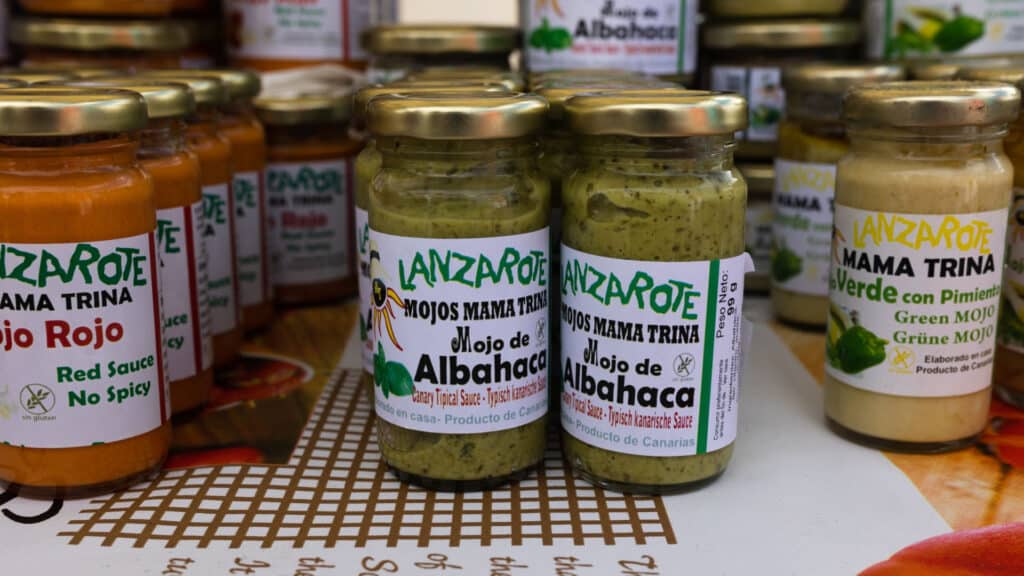
Pronounced (mO-ho), this sauce is as typical in Lanzarote as ketchup or mayonnaise. There are two varieties, Red and Green.
Green is primarily used for fish and is traditionally made with dried green peppers. There are versions made with coriander or parsley; there is no definitive recipe.
Red mojo is made from small dried red peppers from La Palma and paprika. It is usually used to accompany the meat, and the red mojo is spicy.
They are fully interchangeable, so you will not look like a total idiot using red on fish or green on meat. In fact, you often get served both so you can choose.
Gofio
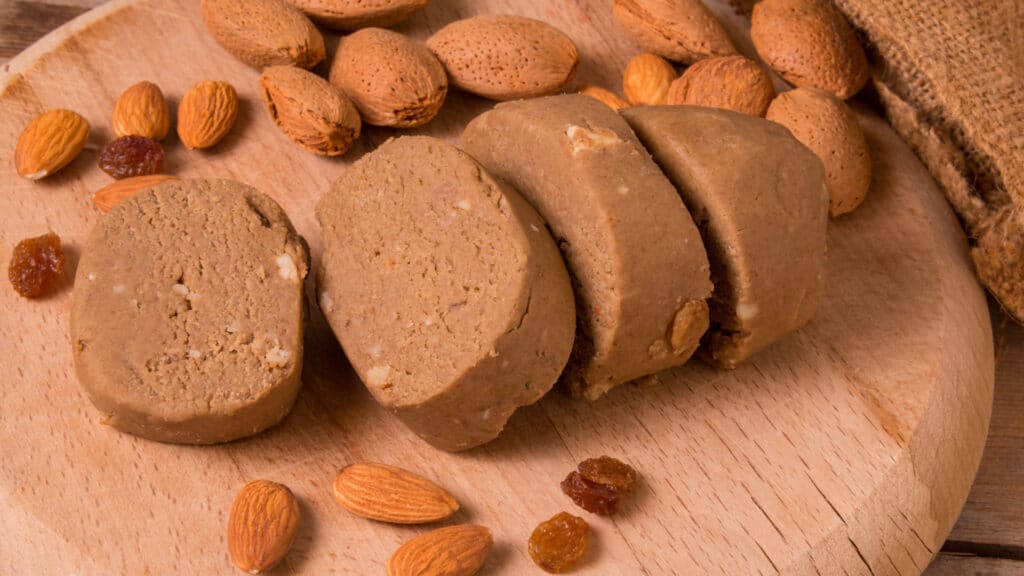
Although being superseded by bread and pasta, Gofio kept Lanzarote going in the past. This “flour” was produced by the island’s windmills from barley and the roots of certain ferns during times of famine.
Its ability to be stored for long periods and the flexibility to use it in baking as a thickener and when mixed with water to become an edible dough made it a staple food cupboard item.
Now I will put a caveat here, this list is the Best Traditional Lanzarote Foods. But everything Gofio is used in is genuinely awful.
I have included Golfio due to its role in historically feeding people during difficult times, and the locals were brought up on it. So, unless you want to try a glass of wallpaper paste just to say you have, avoid it as a breakfast drink.
Goats Cheese
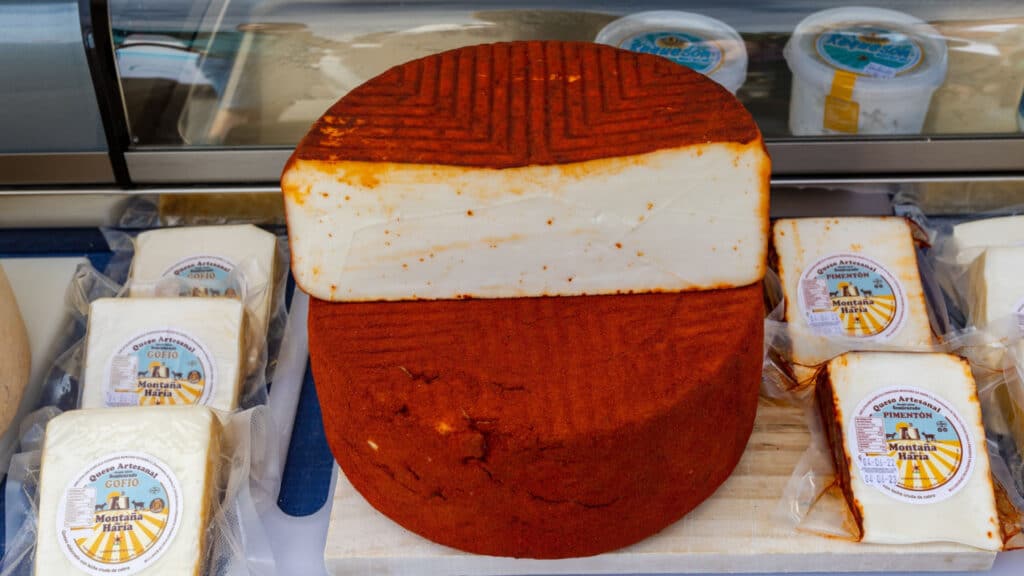
Goats are popular livestock animals across Spain and the Canary Islands. Their ability to graze on anything and survive the harsh climate makes them widespread, and not only do they give meat, but they also give milk.
The goats are all native to Lanzarote and come from a breed known as Majorero, meaning someone from Fuerteventura, where the breed originated.
Goats cheese is mild and creamy when young and develops intense flavours as it matures. Some have their rinds coated in the awful Gofio. Why ruin great cheese? Other mature cheeses have the rinds covered in paprika or even chillis.
There are six artisan cheese producers on Lanzarote, all producing high-quality cheeses for fresh goat’s cheese from around €9 / kilo.
Lapas
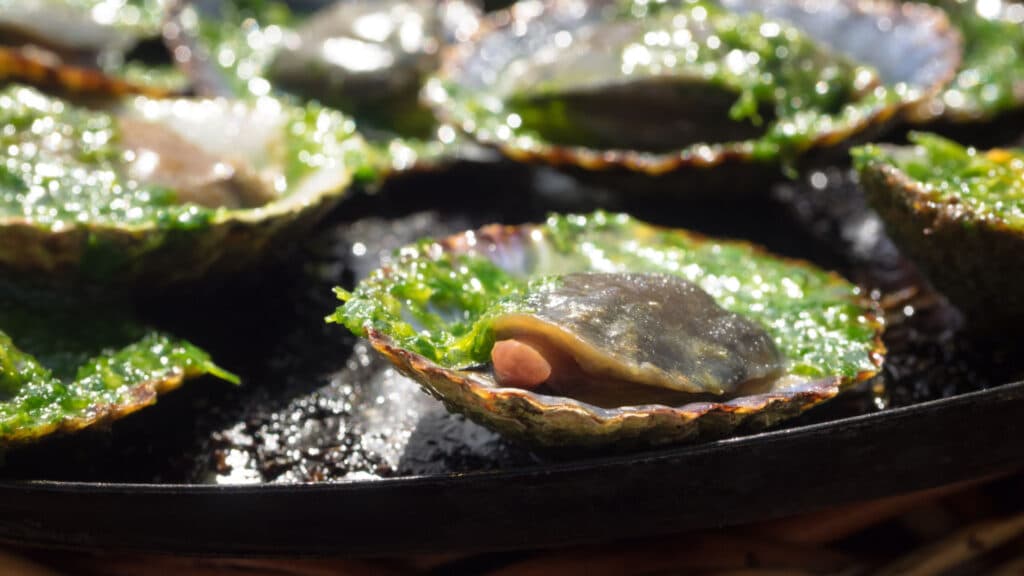
Limpets. Limpets are not popular on the Peninsular except in isolated areas such as Asturias. Still, they have been a large part of Lanzarote cuisine for centuries. They are clamped onto the volcanic rocks around the island and fed by the nutrient-rich Atlantic Ocean.
Usually, these are grilled until the flesh is released from the shell and then topped with green mojo sauce. If you are a fan of mussels and oysters, you will most likely enjoy them, but they are chewier than both, and are best eaten hot before they go cold and hard.
Try them as a tapa or a ración, rather than the main course and share the experience with friends.
Conejo Campesino
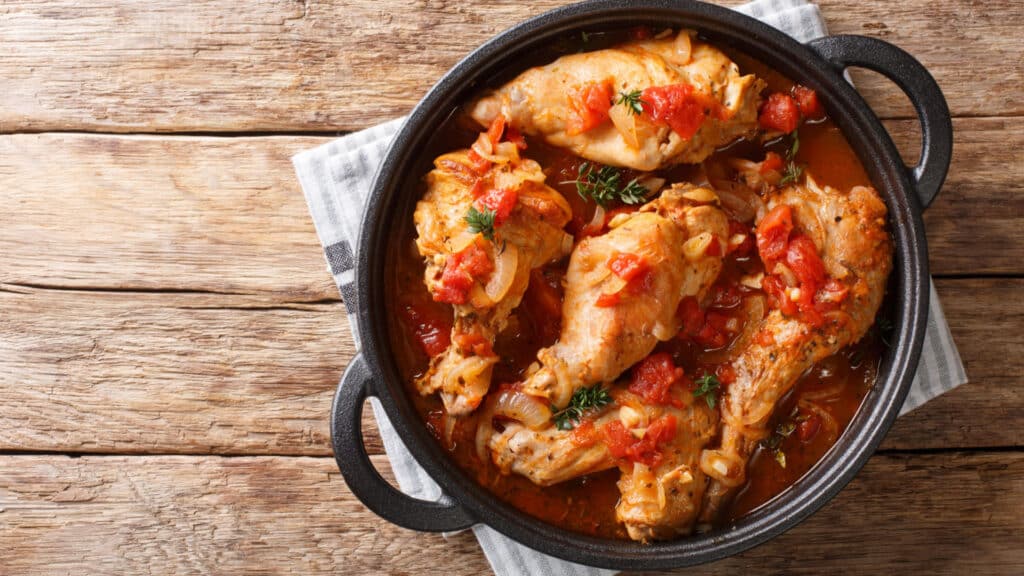
Rabbits are traditionally hunted on the island with dogs during the August to November hunting season and are often on local restaurant menus. Peasant-style food delivers on flavour as the limited ingredients work hard to make the whole dish tasty.
The rabbits are incredibly fresh due to only being available when caught. Being wild, they have plenty of excellent low-fat meat and a “gamey” flavour.
This dish literally means “Peasant Stew” and is precisely that. A rabbit, chopped into pieces in a rich sauce made from wine, garlic, tomatoes and sweet paprika. Served with some wrinkled potatoes and fresh bread to wipe up the sauce…yummy!
When I was a child, everyone had a pot of rabbit stew on the go, cheap, wholesome and delicious, and this version with Mediterranean influence never disappoints.
Atún en adobo
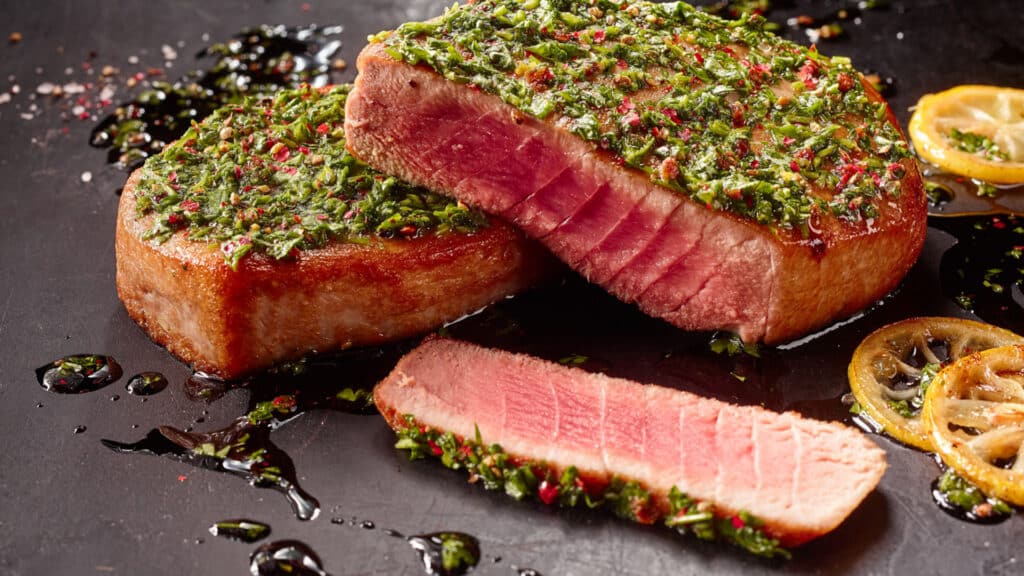
You will see the word adobo regularly as it means “marinated” and is used across the Canaries and the Peninsular.
What better fish to marinade than tuna, abundant in the Atlantic waters surrounding Lanzarote? With flesh that can take a lot of flavours, this typical marinade makes for a perfect fish dish. A mix of garlic, pepper, bay leaf, paprika, oil, thyme, oregano, vinegar and salt is applied and left overnight.
Although every restaurant will have its own version, this is the traditional way to prepare it. The fish will usually be served cubed, and the leftover marinated cooked in the oil the fish was fried in to produce a rich, aromatic sauce.
A fantastic dish if you like eating fish but don’t like it “fishy”.
Pescado a la Plancha / Parrillada de Pescado
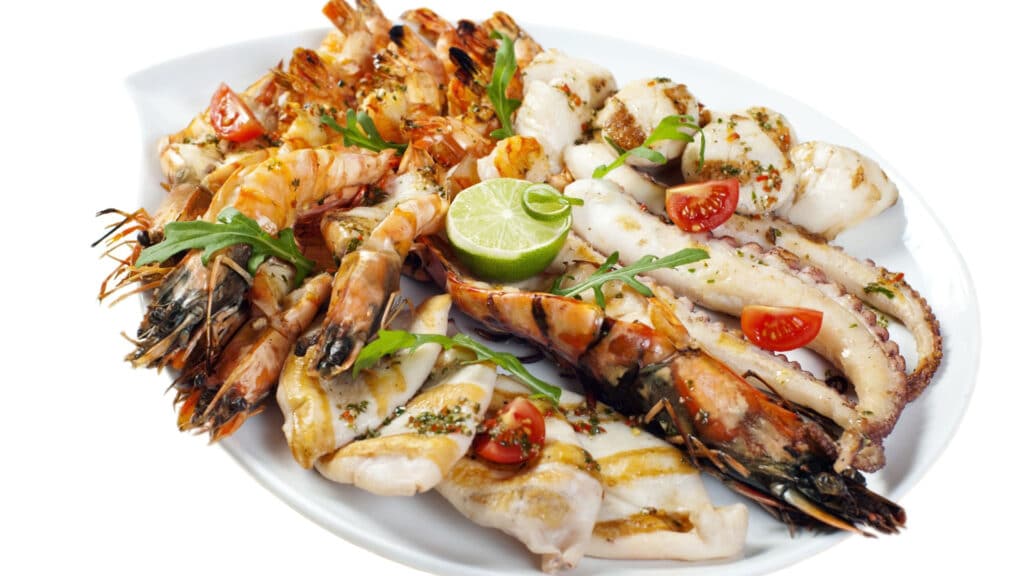
Not unique to Lanzarote but a staple for an island with access to such fantastic fish. Although the heading means “cooked on a flattop grill” or “mixed platter of fish”, you may be offered it fried as well.
This is fish cooked in the simplest way possible. Fresh fish cooked using nothing but salt and a rub with oil. If you order the parrillada, it will be a mixed platter of grilled fish and other seafood such as octopus, prawns, razor clams, or whatever came in from the boat fresh.
A parrillada usually is for sharing, so you will order it for, say, two people or four people. Your waiter will be able to tell you what fish they have available and, with a word of caution, ask the price.
It is a great way to explore different fish, and even if you have no idea what you are eating, I’ll guarantee you will enjoy it.
You may also see a parrillada de Carne advertised, which is a mixed platter of meats.
Bienmesabe
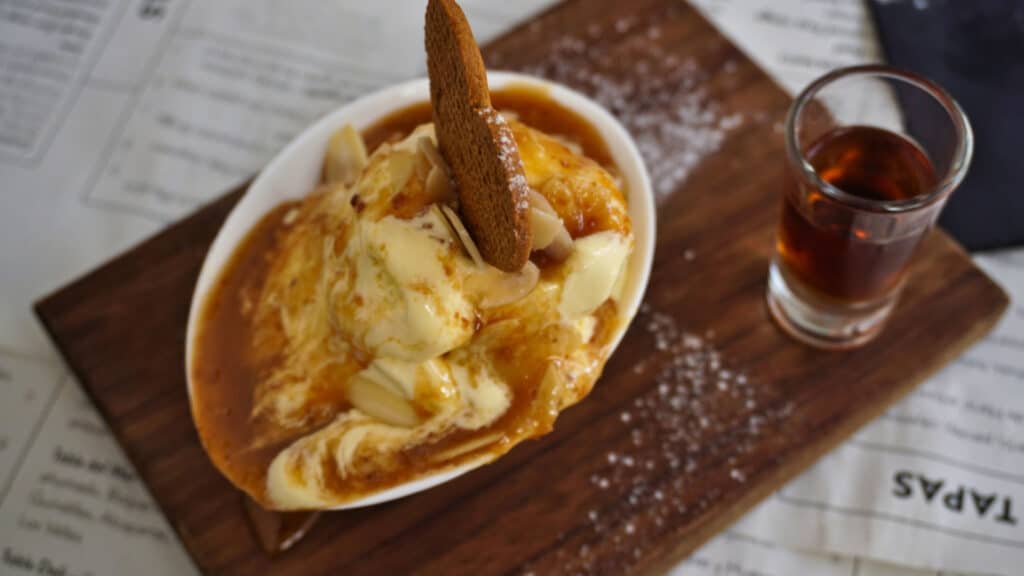
If you have a sweet tooth, you are going to love this. This Hispanic and Lanzarote favourite translates as “tastes good to me”.
Bienmesabe is made from ground almonds, egg yolks, sugar and lemon. Depending upon the preparation method, it can manifest as everything from a thick sauce to an almost cake-like consistency.
Its’ Moorish origin guarantees it will be sweet. It is often served with dates and pomegranate seeds, cementing the Moorish roots; it is a great way to end a meal. Why not share it and half the sugar rush, though?
Santa Prawns
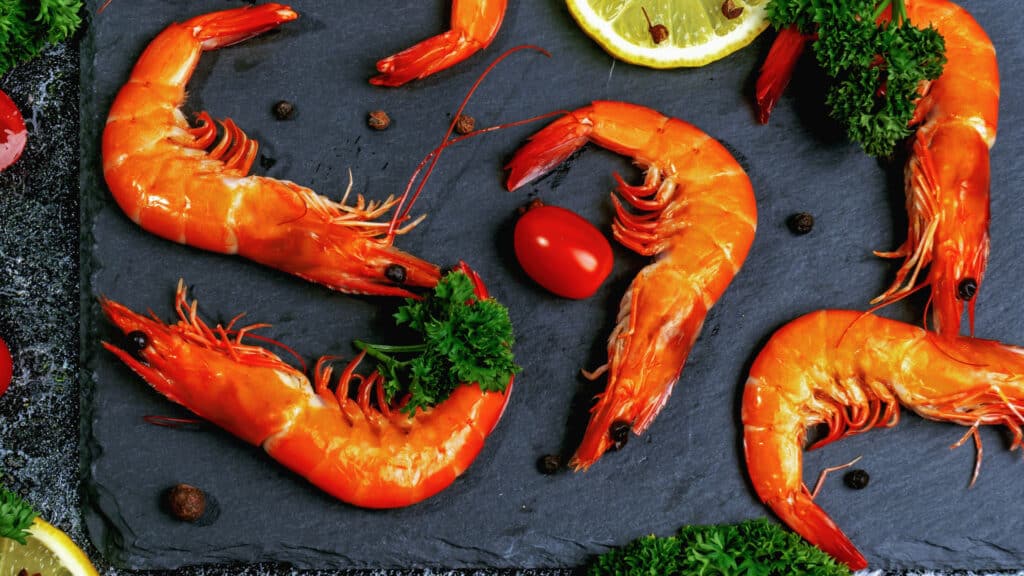
In Lanzarote, these prawns are called La Santa as they are caught near the Northern town of Santa, not because they are red with white beards. They migrate to the El Golfo area around Christmas, maybe for a holiday?
The rest of the world knows them as Soldier Prawns, and I’ve no idea why.
They live pretty deep and are caught generally using traps, baited with chicken, in the deeper sea areas at depths of 50-500 metres. These depths for fishing make this prawn elusive and expensive, with wholesale prices around €40 per kilo.
They are considered a real delicacy and sell out very quickly when available. Santa prawns are around 10 cm long, and the flesh is considered sweeter than other prawns.
They usually will be grilled on a bed of salt from the nearby salt pans of Salinas de Janubio.
The flavour and texture are described as exquisite. If you are a prawn lover, you must add these to your prawn-eating bucket list.
Barraquito
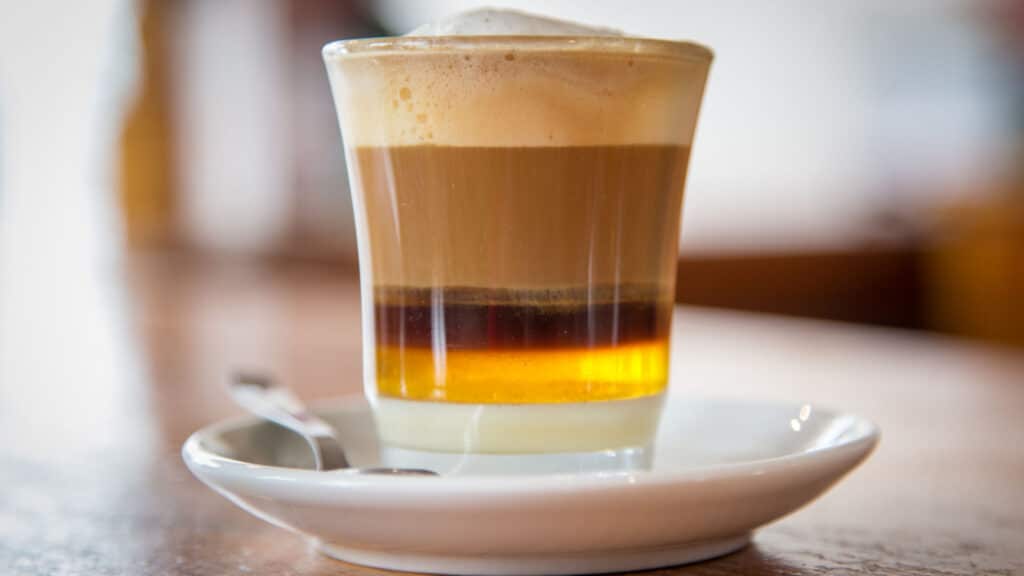
This coffee, pronounced bara’kito is unique to Lanzarote and the Canary Islands, and is a multi-layered coffee with a difference.
It is served in a glass so you can observe the carefully constructed layers by the barista.
Made by first adding sweetened condensed milk to the glass, followed by Liqueur 43, espresso coffee, lemon peel, frothed milk and then a sprinkle of cinnamon.
Not your standard Nescafe but undoubtedly liable to pick you up with all the sugar and alcohol. Its’ got to be worth a try on any visit to Lanzarote.
Wines
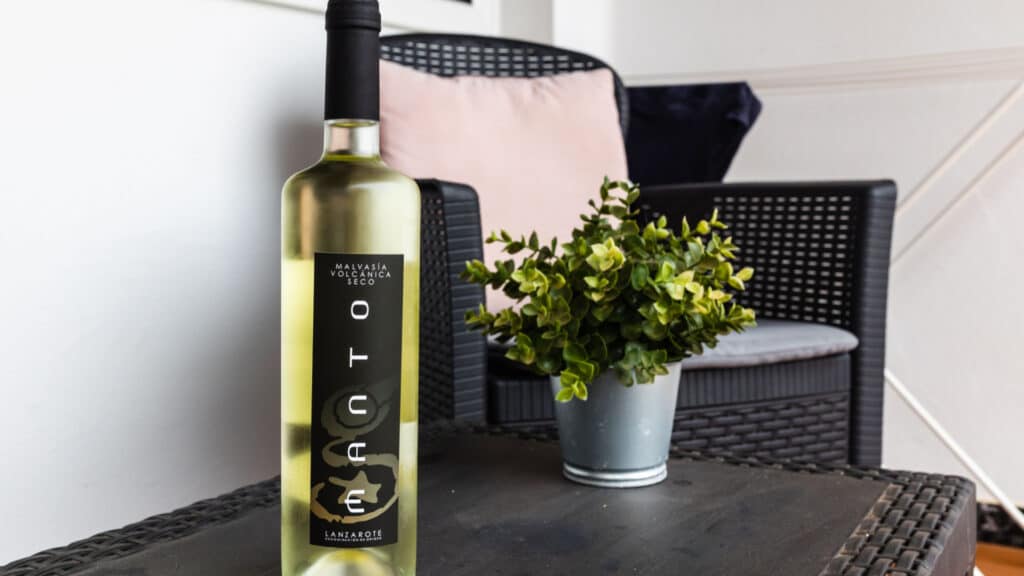
I can’t leave you without mentioning Lanzarote wines briefly. This inhospitable volcanic island is home to some extraordinary wines. The oldest vineyard and winery or “bodega” dates back to 1775.
The innovative way the vines are managed allows them to flourish in this challenging environment. I don’t know if you prefer a full red or a dry, crisp white, but wine has been a part of Lanzarote culture for centuries.
While you enjoy your seafood, try a bottle of El Grifo Malvasía Seco, or for red meats, a bottle of Red Malvasía Volcánica Seco would hit the spot. It is the least you can do to support an industry nearly 250 years old.
Conclusion
Lanzarote has a rich and varied history and is full of traditions. These traditions overflow into daily life and into the food of the island.
So if you plan to go to Lanzarote for a break, make an effort to try the Best Traditional Lanzarote Foods, but not Gofio; I can’t stress that enough!



